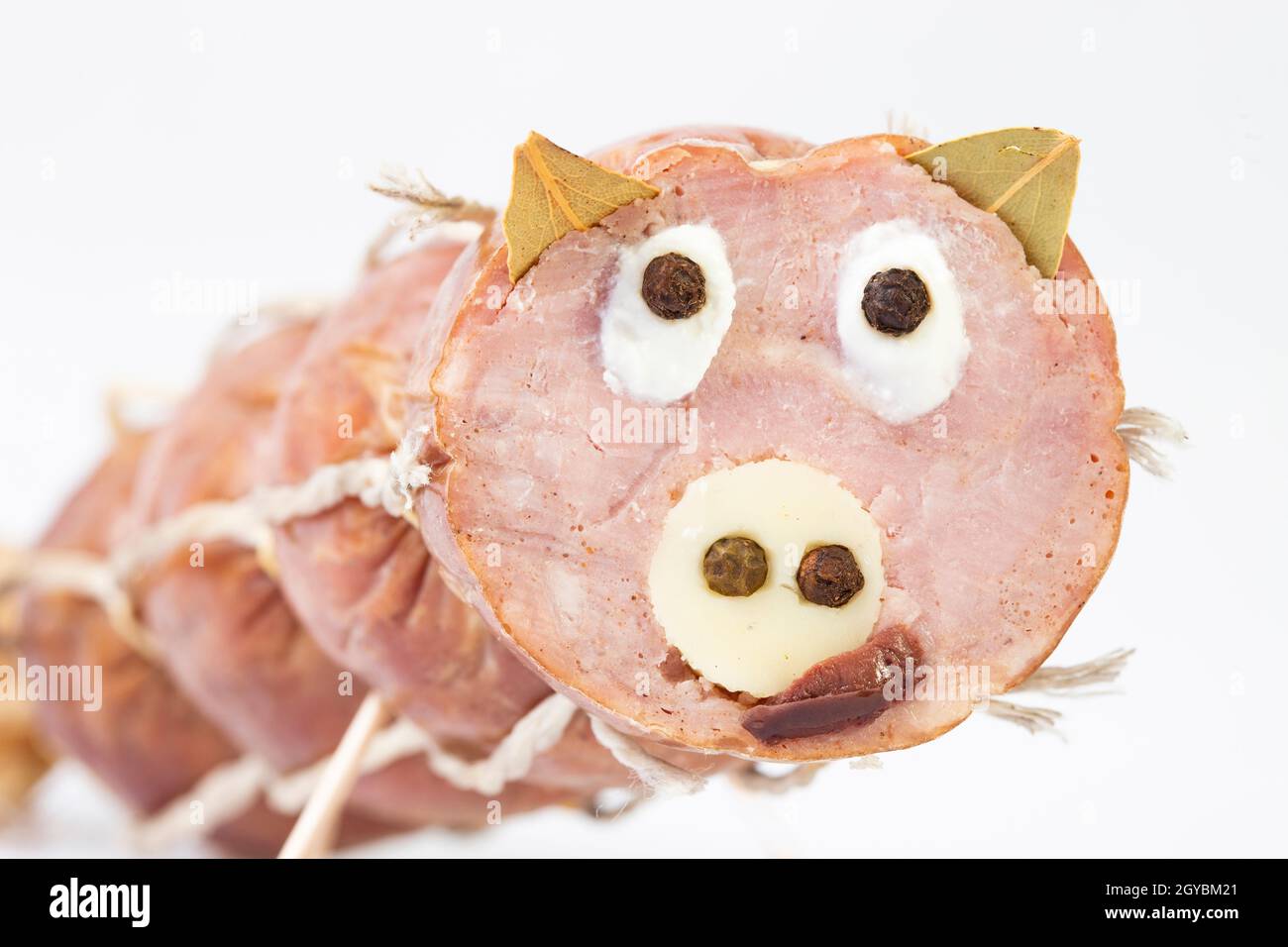The Italian gastronomic heritage is as vast as it is ancient: cheeses, pasta, wine, olive oil are just a part of the many delicacies that have always conquered palates from all over the world.
Salami is one of the most loved and often most imitated foods, thanks to the flavour that makes it appreciated both alone and accompanied by other Italian delicacies: it’s made of pork meat, fat, salt and spices, suitably stuffed and then subjected to seasoning.
In Italy, there are various types of salami: we remember, for example, the salami of Milan, the one of Naples, of Felino and the salami of Cremona.
In general, the cuts of pork used are the thigh, shoulder, loin, filet, belly and the succulent fat from the pig’s jowls (guanciale). Salami are usually aged between 30 and 90 days—and beyond. A good salame has to have the right balance of lean meat and fat.

The delicacy and flavour of salami: the most popular recipes
Salami is one of the most loved Italian sausages. Tender and tasty, the salami is suitable for simple or complex dishes, according to the tastes and desires of the palate of the diners.
Like other sausages, salami can also be used to prepare delicious sandwiches, in which to add condiments and, why not, a few slices of cheese.
Leaving out the sandwiches aside, let’s discover the best recipes starring one of the most popular cured meats in Italy!
Stages of salami processing and nutritional values
The first phase of processing the salami is the choice of meats that are generally mechanically minced (there are, however, salamis where the cut is made with a knife, and this is the case of Friulian salami). It is precisely the meat’s grain (fine, medium or coarse) that distinguishes the various types of salami.
The next step is the addition of saltpetre, which is the potassium salt which is essential not only for preserving the sausage (it prevents microorganisms from altering its flavour) but also for the seasoning and the enhancement of flavours.
In addition to the salt, fat is added to the dough to give the salami more softness: it is most often taken from the finest pork cheek or the other subcutaneous areas of the pig.
Spices and aromas are those ingredients that give flavour to the salami: ground or whole pepper, fennel seeds, wild fennel, chilli, red or white wine, garlic and, as in the case of blood sausage, real pig’s blood.
Once the dough has been prepared, it is bagged inside a natural gut with a classic narrow and elongated shape: the salami is, therefore, ready for seasoning in humid and relatively cool environments, for a period that can range from 1 to 5 months (some salamis, such as casereccio, undergo a seasoning of up to 1 year).
Salami, like other sausages, although they are not suitable products to be consumed in a dietary regime, are artisanal foods and genuine if consumed in the proper doses.
In 100 grams of product, there is approximately 370 Kcal: consuming slices of salami also means taking in other vital nutrients such as B vitamins, proteins, water, carbohydrates, saturated fatty acids, sugars and mineral salts such as zinc, phosphorus, iron and sodium.
Salami Making | How to Make Everything: Preservatives
FAQ
What meat is salami made from?
What is the white stuff in salami?
What part of the pig is Genoa salami?
Is salami made in intestine?
What is salami deli meat?
Salami is a type of deli meat, resembling a dried sausage but much larger. It’s made of cured, dried meat but may sometimes be made of cooked meat. There are so many salami types out there and each type has its own, specific recipe which dictates what the salami is made of.
What meat is used for salami?
As for the meat used for salami, the most common is pork, though there are beef, turkey, game, horse, reindeer salami and some parts of the world may have a very ‘exotic’ meat added. Back in ancient times salami was one of the best ways to preserve meat over long periods of time.
What is salami made of?
Traditionally made of pork and veal meat, it is typically seasoned with garlic, pepper, and red wine. This salami made of pork, usually the back fat part, which is cured with rosemary herb. Typically from Naples, it is made of pork meat heavily spiced with red and black pepper and seasoned with salt, garlic, and sometimes white wine.
What exactly is salami?
Simply put, salami is everything. No, seriously— it’s a generic term referring to any sort of encased meat. The word Salame has Latin origins (“Salumen”) meaning exactly that—a combination of salted meats, instead of a particular type of meat.
